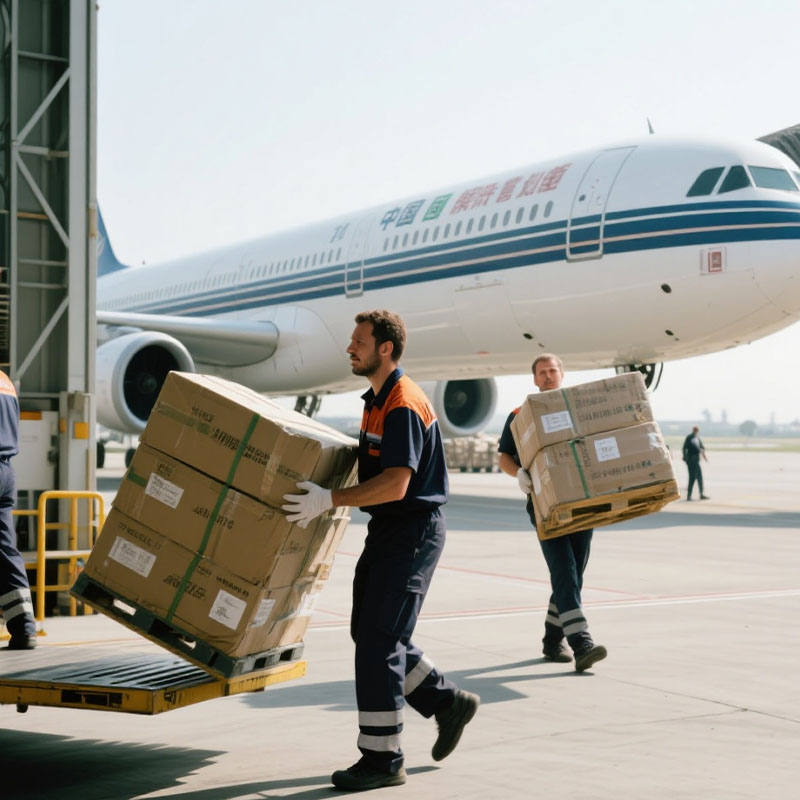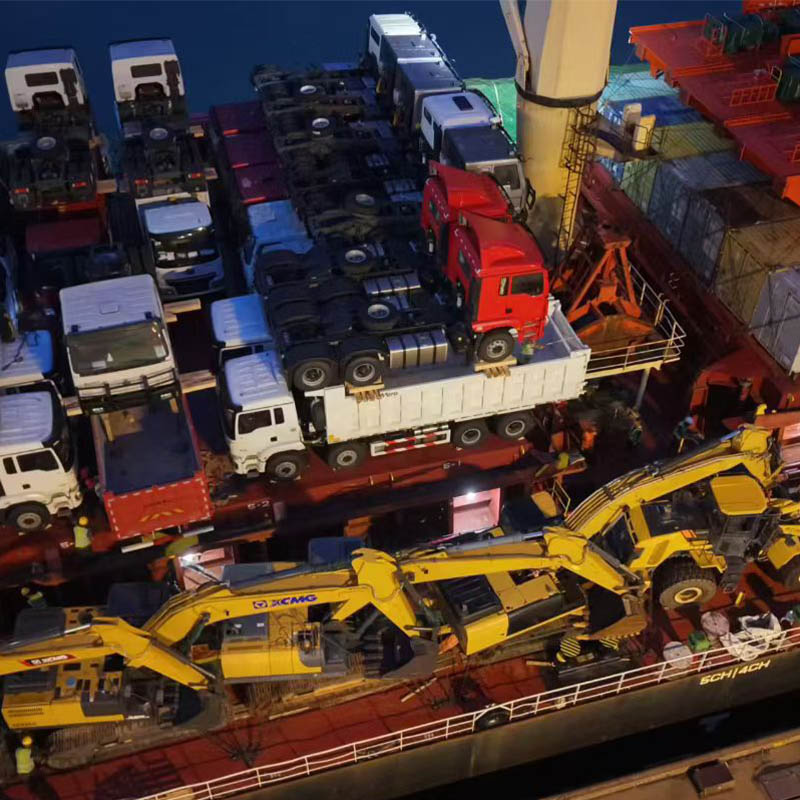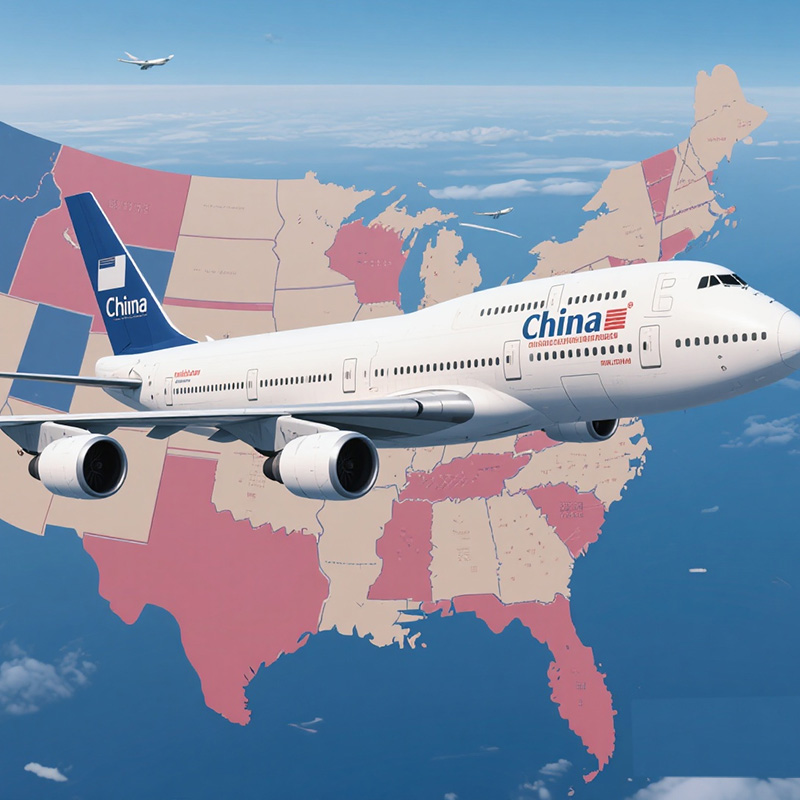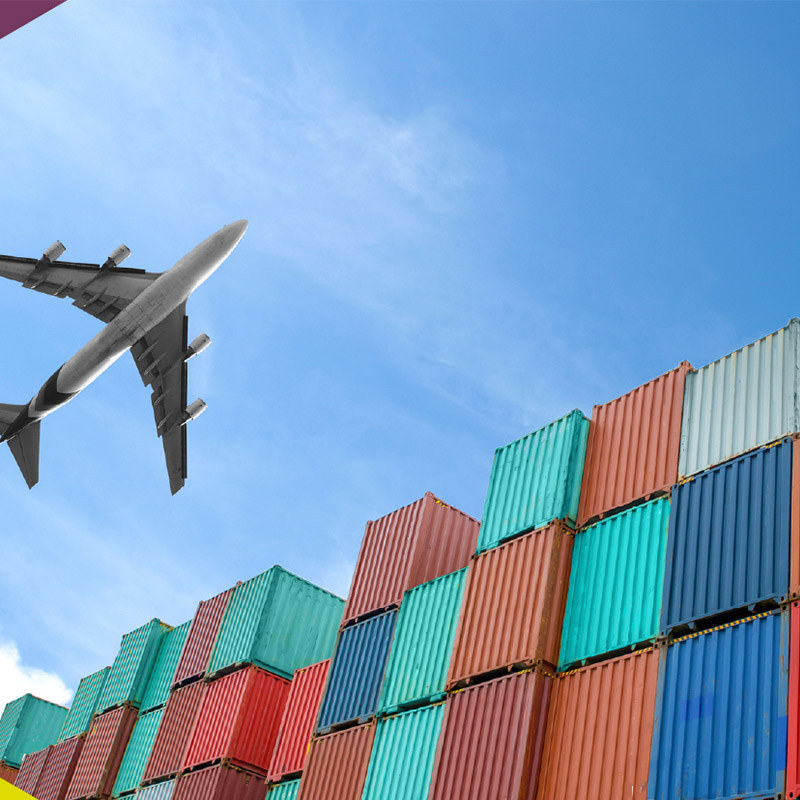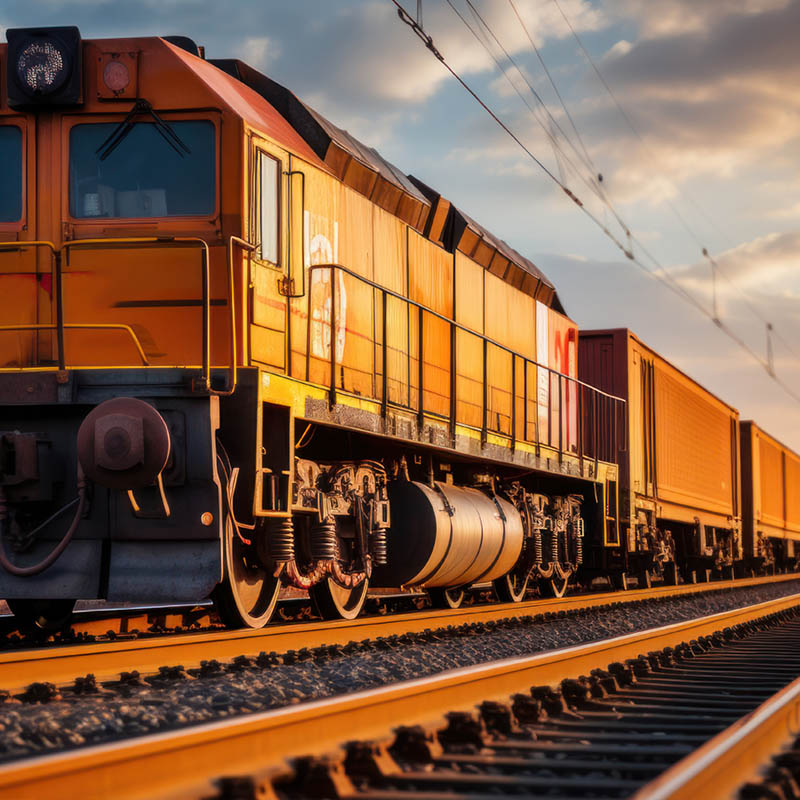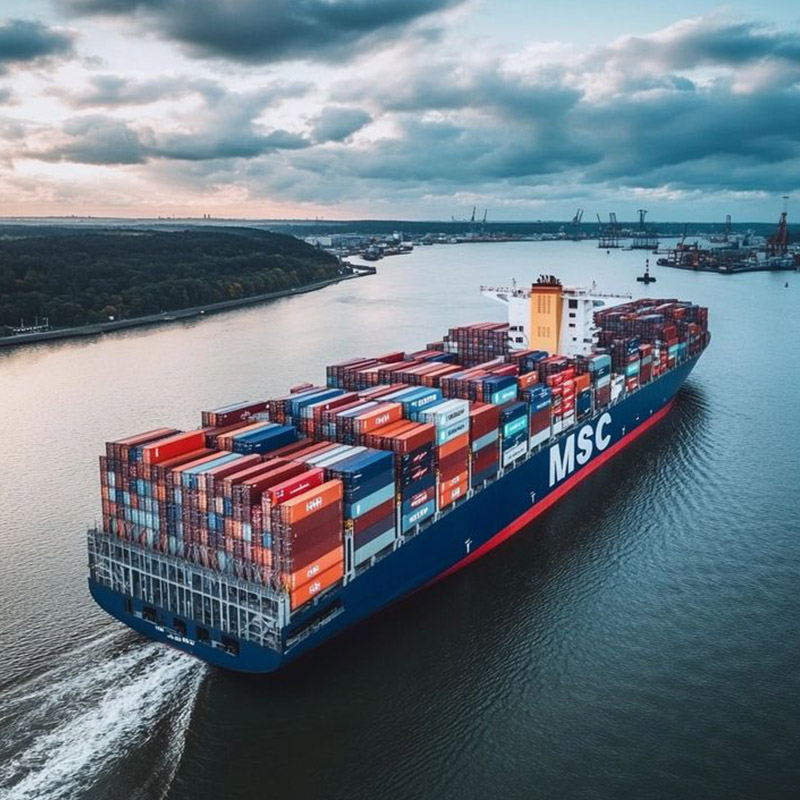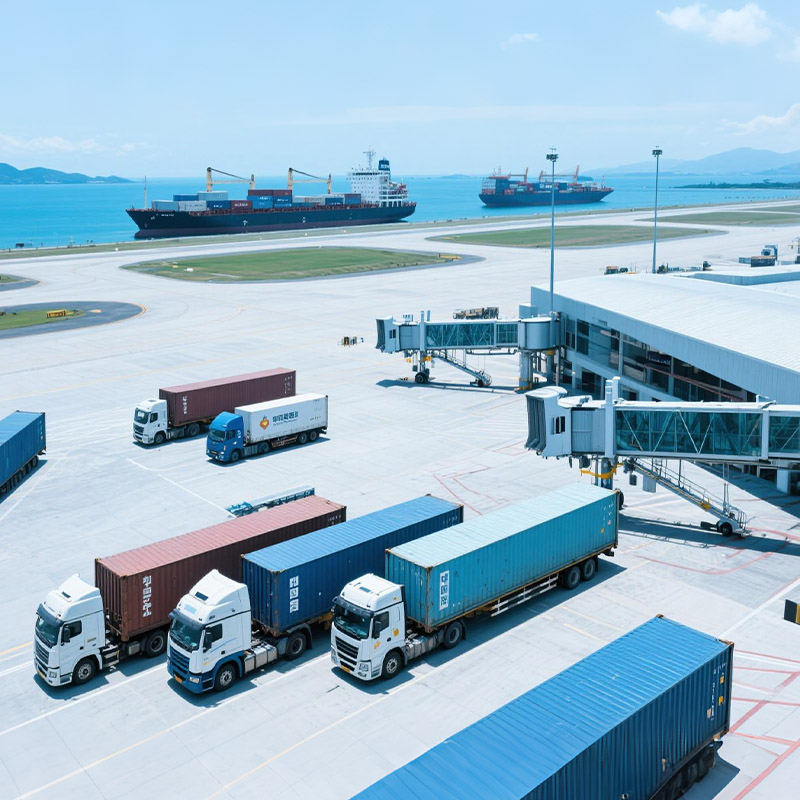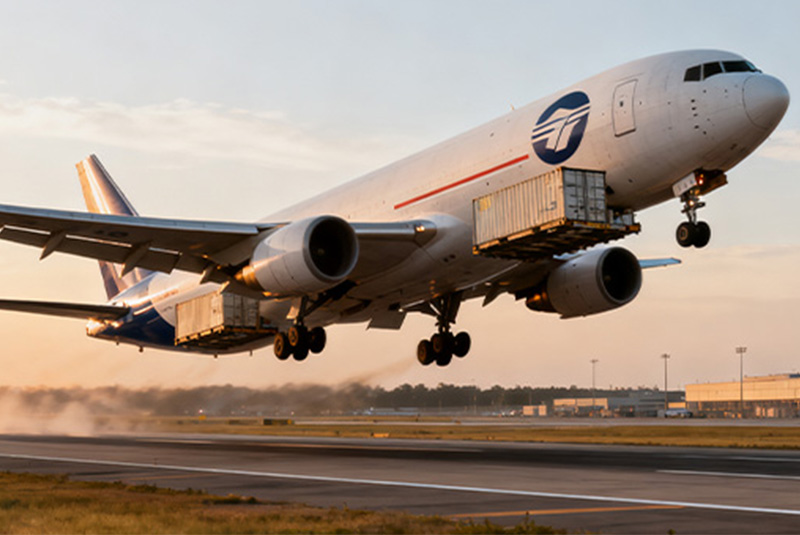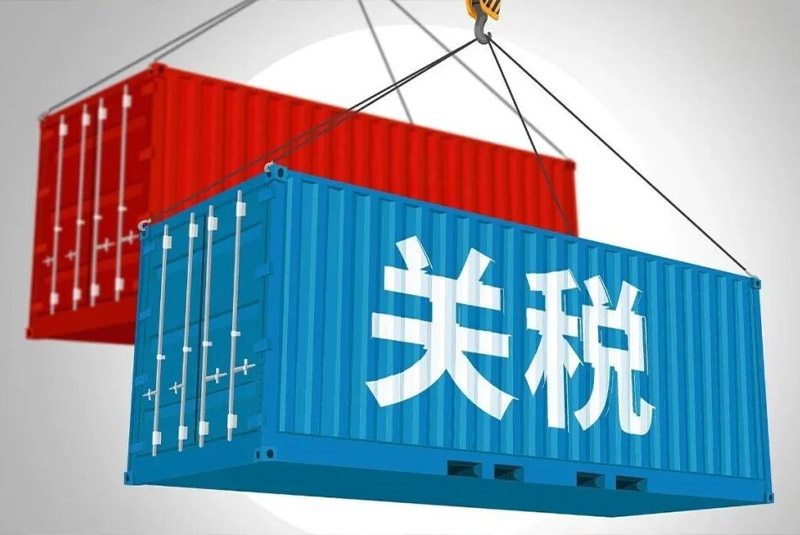Shipping internationally can be a real challenge, especially on busy routes like China to Italy. Believe me, I’ve been there.

To efficiently ship goods from China to Italy, you need to consider factors such as shipping method, cost, delivery time, and customs regulations. Options include express, air, ocean, rail, trucking, and door-to-door services, each with its own advantages.
Stay tuned as I share valuable insights on optimizing your shipping process. You’ll learn how to reduce costs and ensure smooth compliance with Italian import regulations.
Express delivery from China to Italy takes 2-5 days.
Express delivery is the fastest way and can be delivered within 2-5 days.
How to ship from China to Italy?
There are several ways to ship goods from China to Italy, each with its own advantages and considerations. Here’s a comprehensive overview of the available shipping options:
- Express delivery
is the fastest shipping method, typically taking 2-3 business days. Major carriers like DHL, FedEx, and UPS offer this service, delivering packages directly from the supplier’s factory in China to their final destination in Italy. This option is ideal for urgent shipments, but it’s often more expensive than other options.
- Air
freight is another fast option, with a transit time of 3 to 10 days. This method is suitable for medium-sized and high-value shipments that require expedited delivery. While faster than ocean freight, air freight is also more expensive, making it less suitable for large shipments. Air freight costs typically range from $4 to $9 per kilogram, depending on the weight and size of the shipment.
- Ocean
freight is the most common method for transporting large shipments because it’s cost-effective. Port-to-port delivery typically takes 30 to 50 days. There are two main types:
Full Container Load (FCL): Ideal for shipments that fill an entire container. A 20-foot container typically costs around $3,000, while a 40-foot container costs around $4,000. Less-than-
Container Load (LCL): Ideal for smaller shipments, you only pay for the space your shipment takes up, costing around $100 to $150 per cubic meter.
- Rail
freight has become a popular mode of transport, offering a balance between speed and cost. With a transit time of 20 to 25 days, it’s faster than ocean freight but cheaper than air freight. This method is particularly advantageous for businesses looking to efficiently transport goods across Europe.
- Truck Freight
Truck shipping from China to Italy is faster than rail and cheaper than air freight, with a transit time of approximately 15-18 days.
CONTACT US
Learn about shipping options
When planning to ship goods from China to Italy1 , you have several options to consider:
- Express delivery : This is the fastest option and is ideal for urgent deliveries. Companies like DHL and FedEx offer reliable services, but they are more expensive.
- Air freight : Faster than sea freight, but more expensive. Suitable for medium-sized shipments.
- Sea freight : The most economical and affordable way to ship bulk goods. It takes longer but saves costs.
- Rail freight : A mode of freight transportation with costs and times between air and ocean freight, often used to transport industrial products.
- Door-to-door service : Streamlines the entire process from pickup to delivery. Customs clearance is often included.
Customs Regulations Guide
Understanding customs procedures is crucial for a smooth shipping process. Italy requires specific documentation, such as invoices, packing lists, and sometimes certificates of origin. Working with an experienced freight forwarder can help ensure compliance and avoid delays.
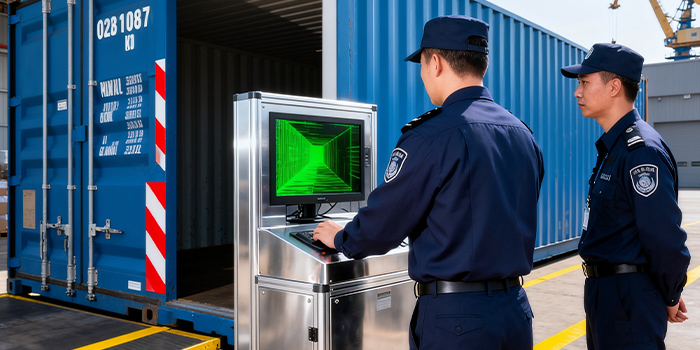
Choose the right carrier
Choosing a reliable carrier can significantly impact your shipping experience. Consider factors like service reliability, customer support, and tracking capabilities. Researching carriers can provide insight into their performance on the China-Italy route.
For those new to international shipping, working with a logistics expert or using a freight forwarding platform can simplify the process and provide peace of mind.
Sea shipping takes 30-50 days from China to Italy.
Ocean freight has low costs but takes longer, 30-50 days.
How much does it cost to ship to Italy?
Understanding shipping costs to Italy is crucial to effectively budgeting your logistics expenses.
Shipping costs from China to Italy vary depending on the mode of transport and the size of the shipment:
Express: $8-12 per kg (2-3 days)
Air freight: $4-8 per kg (5-10 days)
Ocean freight: $3,000-4,000 per container (30-40 days)
Railway freight: $2-2.5 per kg (22-30 days)
Truck freight: $3-5 per kg (15-18 days)
CONTACT US
Key factors affecting transportation costs
There are several key factors to consider when determining the cost of shipping goods to Italy:
- Weight and size: The size and weight of your shipment are key factors. Heavier and bulkier items will incur higher charges due to increased space requirements and weight handling requirements.
- Shipping method: Different shipping methods, such as express , air or sea, have different prices. Express is usually faster than air or sea, but it is also more expensive.
- Distance: The distance between your origin and destination affects fuel costs and transit time, thus impacting the overall price.

Additional costs to consider
In addition to the base shipping fee, please consider the following potential additional charges:
- Customs Fees: Import duties in Italy vary depending on the type and value of the product.
- Fuel surcharge: Fluctuations in fuel prices can affect freight rates.
- Handling costs: This is especially true for fragile or hazardous materials that require extra care.

Understanding these factors will help you estimate more accurately and effectively plan your budget for shipping goods to Italy. For bulk cargo shippers, it is also helpful to learn about the bulk shipping discounts offered by some carriers.
What is the import tariff from China to Italy?
For businesses shipping goods from China to Italy, understanding import tariffs is crucial.
Import duties from China to Italy depend on the product category and its value, with rates typically ranging from 0% to 12%. Other charges may include VAT and excise tax. Accurate classification and valuation of goods are crucial to determining the correct import duties.
Import Tariff Overview
Import duties are taxes levied by a country on incoming goods. In Italy, these duties are governed by the EU Common Customs Tariff , which harmonizes rates across all EU member states. The primary purpose of these duties is to protect domestic industries by making imported goods more expensive than comparable domestically produced goods.
Calculate import tariff rates
The tariff rate depends on the Harmonized System (HS) code of the imported product . This system classifies products into different categories, each with a specific tariff rate. For example, clothing may have a higher tariff rate than electronics. Most consumer goods imported from China to Italy are subject to tariffs between 0% and 12%, but certain sensitive products may have higher rates.
CONTACT US
| Product Type |
Typical tax rates |
| textile |
8% – 12% |
| Electronics |
0% – 5% |
| mechanical |
twenty four% |
| furniture |
5% – 10% |
Additional charges: VAT and GST
In addition to import duties, imported goods are subject to Value Added Tax (VAT). Italy’s standard VAT rate is 22%, applied to the sum of the product value, import duties, and shipping costs. Certain products, such as tobacco and alcohol, may also be subject to excise tax.

The importance of accurate classification and valuation
Accurately classifying and valuing your cargo is crucial to ensuring compliance. Misclassification can result in underpayment or overpayment of duties, resulting in fines or delays. Utilizing a service like Customs Broker6 can help you navigate these complexities efficiently.
Leveraging trade agreements
Italy benefits from several trade agreements within the EU framework, which may affect customs duties. Investigate potential Free Trade Agreements (FTAs) 7 that may apply to your products and could result in reduced or no customs duties.
What is the best carrier for shipping to Italy?
Choosing the right carrier is crucial to ensuring timely and cost-effective delivery of your cargo to Italy.
Choosing the best freight forwarder for Italy depends on your priorities, such as speed, cost, and reliability. Consider leading global express providers like DHL, FedEx, and UPS. If you’re looking for affordable shipping options, consider ocean or air freight companies with established routes between China and Italy.
Factors to Consider When Choosing a Shipping Carrier
When choosing the best carrier to ship your goods to Italy, you should consider several factors to ensure your shipment arrives safely, on time, and within budget.
Cost-effectiveness:
If you want to strike a balance between cost and delivery time, choose sea or air shipping. These methods usually offer competitive prices for bulk shipments.
Delivery Time:
If speed is your priority, express delivery services from DHL, FedEx, and UPS are excellent options. They offer expedited shipping options, allowing delivery within a few days.
Reliability and tracking:
Make sure the carrier offers reliable tracking and is known for on-time delivery. Carriers like FedEx and DHL have robust tracking systems that provide real-time updates.
Customs expertise:
Choose a carrier experienced in handling customs formalities for shipments to Italy. This will help you avoid delays and ensure compliance with local regulations.
Customer Service:
If something goes wrong during shipping, excellent customer support is crucial. Companies like UPS are known for their responsive customer service.
CONTACT US
Comparing popular operators
| carrier |
speed |
cost |
reliability |
track |
| DHL |
quickly |
high |
high |
Yes |
| FedEx |
quickly |
high |
high |
Yes |
| ups |
Easing |
Medium |
high |
Yes |
| Local freight forwarder |
Slow to medium |
Low to medium |
Easing |
Different |
in conclusion
Choosing the best carrier largely depends on your shipping priorities, such as cost, speed, and reliability. For businesses that prioritize speed and reliability, an established global carrier is a wise choice. If cost is a higher priority, exploring local freight forwarders or combining multiple shipping methods may be helpful.
Which is the fastest mode of transportation from China to Italy?
Speed is crucial for international cargo transportation. For China-Italy routes, choosing the fastest shipping method can save time and improve business efficiency.
The fastest shipping method from China to Italy is usually by express delivery. Express delivery services offer expedited services, with delivery times ranging from 2 to 5 days, depending on the specific service and carrier chosen.
Understand express delivery
Express delivery is the fastest option due to its priority handling and direct flights, making it a popular choice for urgent deliveries. Carriers such as DHL, FedEx, and UPS offer this service, ensuring expedited delivery of goods to their destination. While express delivery may be more expensive, its speed makes it an ideal choice for time-sensitive shipments.
Compare Shipping Methods
When evaluating the speed of different methods:
- Air freight: Usually takes 5 to 10 days. It is faster than sea and rail transport, but slower than express delivery. It is suitable for shipments with medium urgency and need to save costs compared to express delivery.
- Rail: Average delivery time is 15 to 20 days, faster than ocean freight but slower than air freight. Rail transport is a viable option for cargo with flexible delivery times and large volumes.
- Ocean freight: The slowest option, taking 30 to 40 days. Best for non-urgent bulk shipments due to its cost-effectiveness.
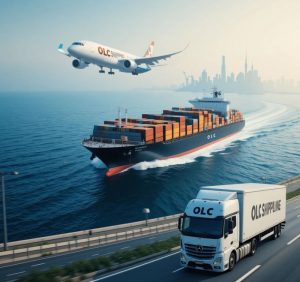
Factors affecting transportation speed
Several factors can affect the speed of your shipment:
- Carrier efficiency: Different carriers have varying operational efficiencies. Studying carrier performance can help you choose the right provider.
- Customs Clearance: An efficient customs clearance process can significantly reduce delays. Understanding the Italian customs process is
- Route selection: Direct routes are usually faster. Evaluating possible shipping routes12 can optimize shipping times.
此处添加图片
For businesses looking to expedite the shipping process, opting for courier services or carefully selecting air freight options from reliable carriers can significantly reduce delivery times.
How do customs procedures affect shipping times?
Customs procedures can significantly impact shipping times and often cause unexpected delays in international trade.
Customs procedures can impact shipping times, including inspections, document verification, and potential tariffs, which can cause delays. Understanding these processes can help minimize lost time.
The role of customs in shipping
Customs authorities regulate the flow of goods in and out of a country. They ensure goods comply with national laws, collect customs duties, and prevent illegal items from crossing borders. This regulatory oversight is crucial but can sometimes lead to shipping delays.
Common Customs Procedures
Document Verification : Customs officials review documents, including invoices and packing lists, to ensure all goods have been accounted for and declared correctly. Any discrepancies can cause delays.
Inspection process : We may conduct random or special inspections to verify that the contents of the goods are consistent with the declared goods. These inspections may take a long time and may require additional handling fees.
Pay duties and taxes : Goods may be subject to import duties and taxes when entering a country. These payments can often cause delays if they are not processed promptly.
Compliance checks : Ensuring that goods meet health, safety, and environmental standards is another key responsibility of customs. Non-compliance can result in goods being detained or even rejected.
Factors Affecting Customs Delays
- Complexity of the product : Highly regulated goods such as pharmaceuticals or electronics may require more extensive inspection.
- Port congestion : Busy ports slow down customs clearance because they have to handle large volumes of cargo.
- Incomplete documentation : Missing or incorrect documentation is one of the most common reasons for customs delays.
- Safety measures : Enhanced safety measures can extend the time required for inspection and verification.
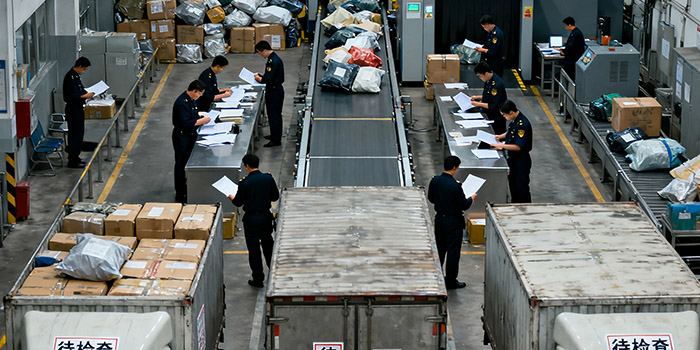
Strategies to reduce delays
- Proper Documentation : Ensure all necessary documentation is accurate and complete prior to shipment.
- Use a customs broker : Hiring a customs broker can help navigate complex regulations efficiently.
- Pre-clearance : Some areas may offer pre-clearance options to expedite processing upon arrival.

By understanding and planning for potential customs delays, businesses can better manage shipping schedules and maintain customer satisfaction. For more insights, view Customs Clearance Challenges and learn how to optimize your shipping processes.
Can I reduce shipping costs by ordering in bulk?
Learn how ordering in bulk can significantly reduce your shipping costs.
Yes, bulk orders can reduce shipping costs due to economies of scale and lower unit costs.
Understanding Economies of Scale
Bulk ordering allows companies to take advantage of economies of scale , which means that as the number of goods increases, the average cost per unit decreases. This is mainly because fixed costs such as container fees are spread over more units, thereby reducing the unit cost.
For example, if you ship 100 units in a container instead of 10,000 units, your per-unit shipping cost will drop significantly. Bulk shipping also often earns you discounts from carriers or freight forwarders, who are more likely to handle larger shipments because they are more efficient.
Compare Shipping Methods for Bulk Orders
Different shipping methods have different effects on bulk orders:
- Ocean freight: Ocean freight is able to carry large quantities of goods at a relatively low cost compared to air freight, making it ideal for bulk cargo transportation.
- Air Freight: Faster, but also more expensive. However, for high-value items, the speed may offset the cost.
- Rail and road transport: Suitable for land connections within Europe, but may not be suitable for initial transport from China.

Here is a brief comparison table:
| Shipping method |
Best for |
cost |
speed |
| Sea Freight |
Large capacity |
Low |
Slow |
| air transport |
High value/speed |
high |
quickly |
| Railway transportation |
mid-range volume |
Easing |
Easing |
Negotiate a better price
Building long-term relationships with carriers and freight forwarders can also result in better rates and priority service. Negotiating 15 terms, such as reduced volume charges or extended credit terms, can further optimize your shipping budget.
Additionally, some companies may offer incentives, such as free storage for a certain period or priority handling for bulk shipments, which can also help save on overall costs.
CONTACT US
Challenges and considerations
While ordering in bulk can save you money, there are drawbacks that must be considered :
- Storage costs: Make sure you have adequate storage facilities to handle the large volume of goods upon arrival.
- Cash flow impact: Investing capital in inventory can strain financial resources.
- Demand Fluctuations: Market demand should justify bulk orders to avoid excess inventory.
To successfully reduce shipping costs through bulk orders, companies should strategically assess their supply chain and market demand. Leveraging data analytics to forecast sales and adjust order quantities accordingly can help mitigate the risk of excess inventory.
What impact do different modes of transport have on the environment?
The international transport of goods involves a variety of methods, each with different environmental consequences.
Different modes of transport have varying environmental impacts. Air transport has the highest CO2 emissions, while sea transport is more efficient but slower. Rail offers a balance, being faster than sea transport but less polluting than air transport. Choosing the right transport mode depends on balancing time, cost, and sustainability priorities.
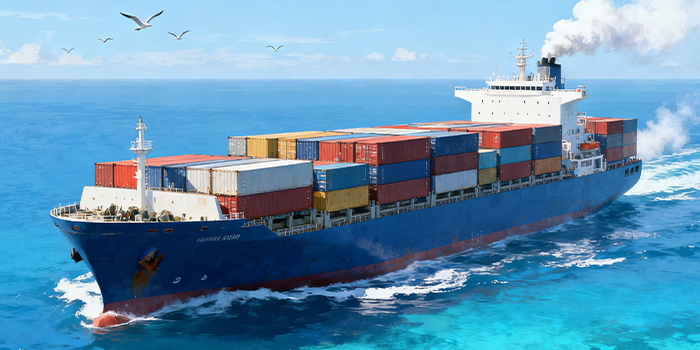
Air freight: speed and environmental costs
Air freight is the fastest mode of transport, but it has a significant impact on the environment. Airplanes are notorious for their high carbon emissions, which contribute to global warming. For example, air freight emits approximately 500 grams of CO2 per metric ton per kilometer, which is significantly higher than other modes of transport.

Maritime transport: slow but sustainable
Maritime transport is generally considered the most environmentally friendly mode of transport per unit of cargo. Cargo ships can carry large volumes of cargo, resulting in lower emissions per unit of cargo. However, they are slower and less suitable for time-sensitive transport. While more sustainable, it is crucial to consider the impact of ship emissions during port layovers.

Rail transport: the middle ground
Rail transport strikes a balance between speed and environmental impact. Its carbon dioxide emissions are significantly lower than air transport, making it a more suitable option for routes with air transport, such as those in Europe and Asia. Rail transport is particularly beneficial in reducing carbon emissions while maintaining reasonable transit times.
Trucking: Versatile but Polluting
Trucks are essential for door-to-door delivery services. While versatile and able to reach areas inaccessible by other modes of transport, they also contribute significantly to carbon emissions. Innovations such as electric trucks aim to mitigate this impact, providing a more environmentally friendly option for short-distance deliveries.
Assessing the sustainability of shipping decisions
To make environmentally friendly transportation decisions, companies need to weigh factors such as cost, speed, and emissions. Increasingly, companies are adopting strategies such as investing in clean technologies or supporting reforestation projects to offset their carbon footprint.
Therefore, the choice of transport mode requires careful consideration of logistical needs and environmental impacts . By doing so, companies can contribute to global sustainable development while maintaining an efficient supply chain.

in conclusion
Efficiently shipping from China to Italy requires choosing the right shipping method, understanding costs and tariffs, and selecting a reliable carrier. Use these strategies to make your logistics smoother and more cost-effective.
1.Explore the detailed shipping methods and their advantages to make the best choice. : Shipping time: With express shipping, goods are usually delivered within 3 to 5 days, which is the fastest shipping method from China to Italy.
2.Understand the cost difference between express and air freight: it is cheaper than express, but more expensive than sea freight.
3.Explore bulk shipping discounts with different carriers. : Want to know how to get the best shipping discounts? We offer specialized rates with over 50 carriers, like 30% off USPS and 55% off UPS Ground.
4.Learn about the standardized customs rates across the EU. The Common Customs Tariff (CCT) applies to goods imported across the EU’s external borders. This tariff applies to all EU member states.
5.Understand how products are classified for tariff purposes. The Harmonized System (HS) is a global product classification system. To export, you need to know the HS code for your product.
6.Learn how brokers can simplify the customs process.
7.Explores agreements that could lower import tariffs. Describes the trade agreements the country has signed. Includes resources for U.S. companies to learn how to take advantage of these agreements.
8.Explore DHL’s express services and enjoy fast and reliable freight services. Learn how DHL, with its global reach and local knowledge, can help you deliver pallets, containers and other freight across Europe and around the world.
9.Discover the competitive rates and strong support offered by UPS . Ship and track domestic and international shipments with UPS, one of the world’s largest and most trusted shipping and logistics companies .
10.Explore the efficiency and reliability of top carriers to make better decisions. : 11 Best International Shipping Services of 2024
- FedEx
- DHL
- UPS
- Blue Dart
- PostNL
- DB Schenker
- R + LCarriers .
11.Understand how Italian customs impact shipping speeds and compliance: Please follow these guidelines to provide documentation and apply for permits (if required) within the required timeframes to ensure your order is delivered promptly.
12.Determine the optimal route and significantly reduce transport times: Our logistics service network covers virtually the entire Eurasian region. Rail transport is faster than sea freight and cheaper than air freight.
13.Master efficient customs clearance strategies to reduce shipping delays. Participate in trade compliance training . For traders who want to avoid customs clearance difficulties, investing in trade compliance training is crucial.
14.Understand how economies of scale reduce transportation costs. Economies of scale are defined as the advantages in unit costs that occur when production levels increase.
Explore strategies to secure lower shipping rates:
- DO: Get payment terms in writing
- Don’t: Go in unprepared
- To do: Prepare to leave
- DON’T: Ignore hidden fees
- DO: Compare multiple carriers .
16.Learn why air freight has a significant impact on the environment. Air freight produces 47 times more greenhouse gases per ton-mile than ocean freight. Airplanes, on the other hand, produce only 500g of CO2 per metric ton transported .
17.Learn how rail transport can effectively reduce your carbon footprint. Rail is the most environmentally friendly way to transport freight over land. On average, trains are three to four times more fuel efficient than trucks .
18.Explore strategies for businesses to balance logistics and sustainability. Eco-friendly shipping includes using biodegradable materials, which can be easily recycled and reused for other purposes, and don’t take too long to decompose .






